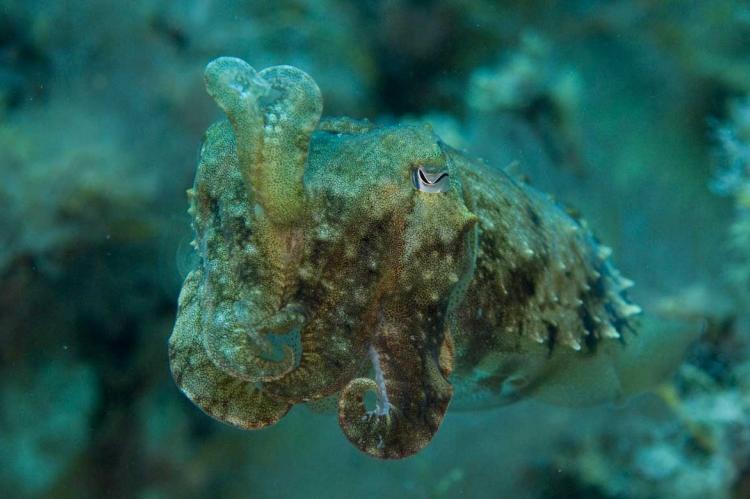Cephalopods traumatized by ocean noise
Low frequency sound found to cause lesions in sensory organs of squid, octopus and cuttlefish.
Noise pollution in the oceans has been shown to cause physical and behavioral changes in marine life, especially in dolphins and whales, which rely on sound for daily activities. However, low frequency sound produced by large scale, offshore activities is also suspected to have the capacity to cause harm to other marine life as well.
Spanish researchers examining the effects of ocean noise pollution on different species of cephalopods have shown that exposure to low frequency sound can cause lesion that has been linked to squid deaths in the wild.
Giant squid, for example, were found along the shores of Asturias, Spain in 2001 and 2003 following the use of airguns by offshore vessels and examinations eliminated all known causes of lesions in these species, suggesting that the squid deaths could be related to excessive sound exposure.
Michel André, Technical University of Catalonia in Barcelona, and colleagues examined the effects of low frequency sound exposure—similar to that caused by the use of airguns by offshore vessels—in four cephalopod species.
Severe lesions
All of the exposed squid, octopus and cuttlefish exhibited massive acoustic trauma in the form of severe lesions in their auditory structures.
The researchers exposed 87 individual cephalopods—specifically, Loligo vulgaris, Sepia officinalis, Octopus vulgaris and Illex coindeti—to short sweeps of relatively low intensity, low frequency sound between 50 and 400 Hertz (Hz) and examined their statocysts. (Statocysts are fluid-filled, balloon-like structures that help these invertebrates maintain balance and position—similar to the vestibular system in the inner ears of mammals. )
Immediately following exposure to low frequency sound, the cephalopods showed hair cell damage within the statocysts. Over time, nerve fibers became swollen and, eventually, large holes appeared—these lesions became gradually more pronounced in individuals that were examined several hours after exposure. In other words, damage to the cephalopods' auditory systems emerged immediately following exposure to short, low intensity sweeps of low frequency sound.
Acoustic trauma
All of the individuals exposed to the sound showed evidence of acoustic trauma, compared with unexposed individuals that did not show any damage.
"If the relatively low intensity, short exposure used in our study can cause such severe acoustic trauma, then the impact of continuous, high intensity noise pollution in the oceans could be considerable," said André. "For example, we can predict that, since the statocyst is responsible for balance and spatial orientation, noise-induced damage to this structure would likely affect the cephalopod's ability to hunt, evade predators and even reproduce; in other words, this would not be compatible with life."
The effect of noise pollution on marine life varies according to the proximity of the animal to the activity and the intensity and frequency of the sound. However, with the increase in offshore drilling, cargo ship transportation, excavation and other large-scale, offshore activities, it is becoming more likely that these activities will overlap with migratory routes and areas frequented by marine life.


